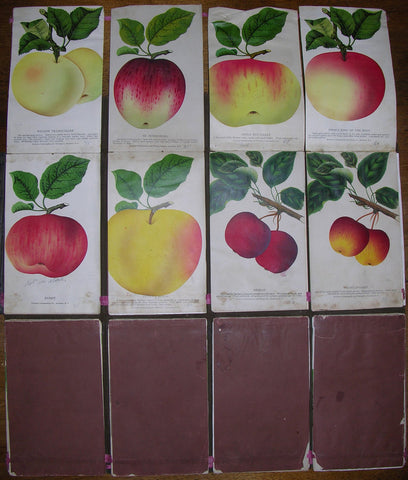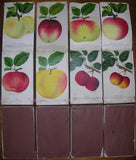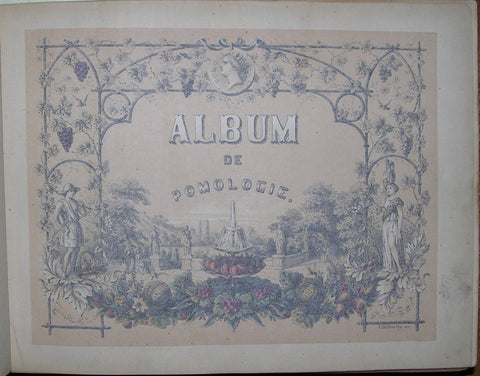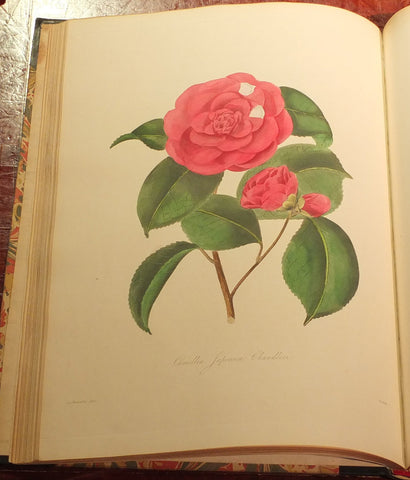Dellon Marcus Dewey (1819-1889), Nurserymen's Sample Book
Dellon Marcus Dewey (1819-1889)
Nurserymen's Sample Book
Rochester Lithographing and Pinting Co, [CA 1900-1910]
8vo., (8 4/8 x 5 4/8 inches). 72 chromolithographed and stencilled plates of varieties of fruit including apples, pears, peaches, plums, grapes, currants, gooseberries, raspberries, blackberries, strawberries, trees, roses, shrubs and flowering plants, mounted on cloth and red tape to form nine 'leaves', each containing 8 images (some plates quite thumbed, creased) and tipped-in to folding wallet; black morocco, gilt, metal clasp (rubbed).
Provenance: with "Wolheter" [?travelling seedsman] gilt stamped under the flap; early pencilled prices on most images.
A travelling seedsman's custom-made sample catalogue assembled from stock plates, including examples produced by D. M. Dewey and the Strecher Lith. Co., of Rochester. "As Rochester's gardening flourished a local bookseller with an interest in the subject, D.M. Dewey, began to collect and publish coloured plates of fruit, flowers, shrubs, and fruit-bearing or purely ornamental trees. Selections of these plates sold by Dewey and others from the 1850s to the last decade of the century were usually bound into pocket-sized books about ten by six inches with stout leather covers, often stamped with the name of the nursery or the salesman offering the plants portrayed within. Dewey also recognised the wider appeal of the coloured plates described by Charles van Ravenswaay as 'an innovation in American popular art' ("A Nineteenth-Century Garden", 1977, page 20...). Their polychromic attractions were extended to a larger audience in small selections from a larger-sized series presented in decorative bindings, ... the earliest plates were simple watercolours, but later, as the demand grew, the technique of theorem paintings coloured with the help of stencils was used to multiply the number of copies as quickly and as cheaply as possible. Later still engraved or lithographed outlines were coloured by hand, and finally chromolithographs printed in colour began to replace more laborious procedures, though some of these were finished by hand too. Most of these processes involved the labour of teams of artists and colourists, one or two of whom went on to establish themselves as rivals to Dewey, though none achieved the same success" (Oak Spring Pomona 64).
We Also Recommend









